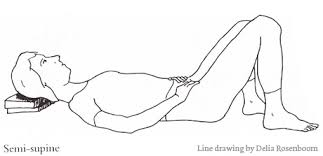
In the exhilarating journey of a digital nomad, every step taken holds the promise of adventure and discovery. Yet, amidst the thrill of exploration, it’s easy to overlook the subtle rhythms of our bodies. Enter the Alexander Technique—a gentle yet profound practice rooted in the wisdom of anatomy and physiology.

Picture this: you’re on the road, with nothing but a backpack and a world of possibilities ahead. With each stride, your spine serves as the steadfast anchor, the headquarters of your body. Here’s where the Alexander Technique comes into play, offering a practical approach to caring for your spine and nurturing your well-being.
How can I get this twice-daily scientific practice started?
Now, you might be someone who prefers tangible evidence over abstract concepts. The beauty of the Alexander Technique lies in its tangible foundation—grounded in the principles of F.M. Alexander’s intuitive science.
It’s not about blind faith; it’s about understanding the intricate dance of muscles, bones, and breath that sustains us with every movement.
So, let’s break it down. At the heart of the Alexander Technique are two foundational practices:
- the semi-supine position
- the art of thinking inside the body.
Sounds intriguing, right? Let’s delve deeper.
The Semi-Supine Position
Firstly, the semi-supine position—a simple yet powerful posture where you lie on your back with your knees bent and feet flat on the floor. In this position, the body naturally realigns itself, releasing tension and allowing the spine to decompress. Study the image at the beginning of the article to adopt the correct position.
To make this ultimate position of rest work, you must lie on a hard surface: the Earth is my favourite. Don’t use any mattresses or beds. If you are inside, then lie on the floor. This position is not about relaxing but about stimulating the spine.
It takes approximately 20 minutes for the 33/34 bones of the spine to truly rest. When we are vertical, the force of gravity weighs heavily on the spine compressing the rubber-like discs between each vertebra. Lying in the semi-supine provides a perfect refuge from gravity and allows the discs to return to their shock-absorber consistency.
Aim to do 2 sessions of 20 minutes each in the morning and in the evening.
Points to watch for:
- Use a book or books which together measure no more than 2 centimetres to place under your head.
- Place only your skull on the books so that your neck hangs freely between the books and your shoulders.
- Make sure both elbows are resting heavily on the ground as you let go.
- Place your hands palms down flat on your abdomen, making sure your wrists are soft.
- Your feet should be flat on the floor, straight – the toes pointing away from your body – about hip-width apart.
- Your knees should be up your heels comfortably close to your buttocks.
- Make sure there is good ventilation and light where you are practising
Below is an image of how your skeleton looks in this position. Note that the arms are not in the semi-supine position to allow you to see the spine correctly. Also, the books should be further away so that the ball of the back of the skull is resting on the edge of your books.

The Art of Thinking Inside the Body
This is a mindful approach that involves directing your attention inward, towards the sensations and subtle movements within. It’s a practice of awareness and presence, allowing you to tune into the signals your body is sending and respond with ease and grace.
You need to be silent and focused to be able to think inside the body, using your mind like a laser. At first, you might get distracted by other thoughts and feelings so that you can’t settle, but with twice-daily practice, you will soon come to enjoy this quiet restful time as well as using your mind for a new purpose.
Applying the Alexander Technique to your Nomad lifestyle
Now, you might wonder, how does all this relate to my nomadic lifestyle? Well, imagine yourself trekking through bustling streets or hunched over your laptop in a cosy café. By incorporating the principles of the Alexander Technique into your daily routine, you not only safeguard your spine from the rigours of travel but also cultivate a deeper sense of connection with yourself and your surroundings.
Moreover, as you navigate the highs and lows of nomadic life, the Alexander Technique becomes a steadfast companion—a beacon of stability amidst the whirlwind of change.
As you grow older, embracing the wisdom of this practice lays the groundwork for graceful ageing, allowing you to slow down and return home to yourself with ease.
Alexander Technique: An Ally
So, to all the young adventurers out there embarking on the journey of a lifetime, consider the Alexander Technique as your ally—a simple yet profound tool for nurturing your body, mind, and spirit on the road less travelled.
Your spine will thank you, and your adventures will be all the more enriching for it.

There will be further articles giving tips on how to use the technique for other purposes once you have mastered the semi-supine and your anatomy by thinking inside your body.

Hi, I was really happy to come across your post, it’s so relevant to me at the moment. As a not-so-young adventurer still out there continuing to embark on my journey of a lifetime, I have constantly run up with bad back issues, as I’ve jumped off trains, and planes, and spent numerous nights in business hotels whilst attending long meetings during the day. This has all resulted in tightness in my back. With the Alexander Technique, I now have a logical approach to stretching and resting my back. Thank you so much!, I’m now looking forward to putting it in place and fingers crossed getting some improvement from its application.
Hello John! Wow! I’m delighted you can adopt this simple exercise so readily! It will start to work after a couple of days. Try lying down at the same times each day, don’t use a pillow but a paperback book, and lie on a hard surface. It’s not relaxation but the opposite. You are stimulating the spine while taking refuge from the battering of gravity!
You may also get something from this article: Mindfulness and Spine Health.
Stay tuned for more articles on the next stage.
Blessings and Spine Health to you.
Linden
What a fascinating read! The Alexander Technique seems like a perfect companion for the nomadic lifestyle, offering a practical approach to nurturing both body and mind amidst the whirlwind of travel. I’m particularly intrigued by the semi-supine position and its benefits for spinal health. I’d love to hear more about how individuals have integrated this practice into their daily routines while on the move. How do you recommend adapting the Alexander Technique for different environments or travel situations?
Hi Hanna. Thank you for this appreciative comment.
Alexander was an unsung genius. He lost his voice as an actor and after visiting medics who could not provide a reason, he set out to discover what he was doing while on stage to irritate or block his larynx. The technique evolved from his exploration. Later it was completely supported by medical research.
I and my friends used the technique every day of a 2-year backpacking world trip. I’m a qualified teacher so I taught in quite a few Body Re-education schools during that trip. It is part of my routine even now I’m not travelling as much. It’s so easy to do the semi-supine wherever you are, though in parks, on shopping centre lawns and desert oases, we did attract lots of attention. 20 minutes is all you need twice a day. It refreshes the whole spinal column as well as the mind. It’s a body meditation!
Wherever you go, just make sure you have a paperback book or two because a pillow will not do. You need hard surfaces to wake the body up. This article might give you more insights too – Mindful Practices for Spine Health.
Hope you enjoy trying this. Let me know if you need any more advice.
Blessings and Excellent Spine Health to you.